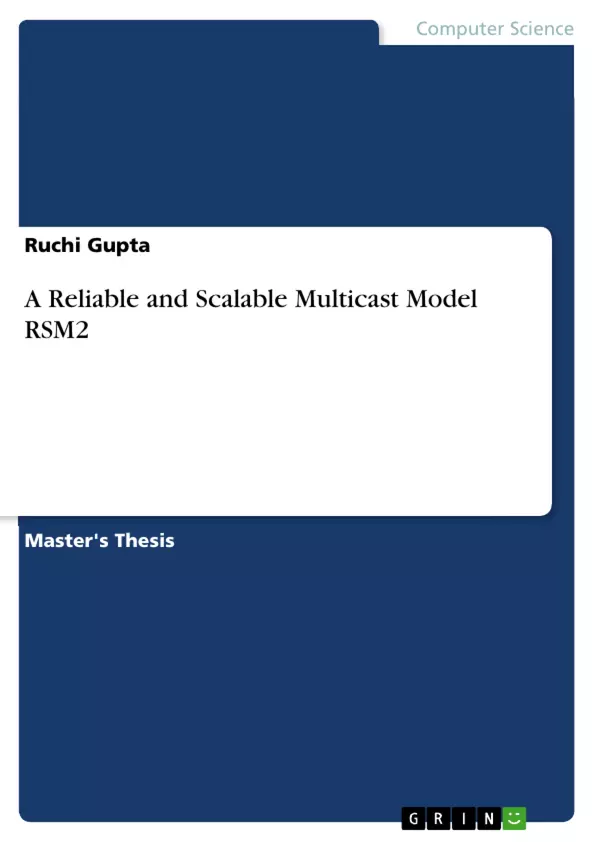Abstract: Multicasting is the ability of a communication network to accept a single message from an application and to deliver copies of the message to multiple recipients at different locations. Our research in Multicasting, as to design a Multicast Model, which provides reliability & scalability with best path for data delivery. Reliability means guaranteed Delivery of packets. Scalability means capability to serve growing needs .In this context, a few concepts of Proactive-Routing technique are used to make available this model in Infrastructure wireless also. Minimum Spanning path and combo-casting is used to reduce the cost & delay and thus to deliver the packets. The main characteristic of RSM2 model is, to provide complete multicasting, i.e. at the same time more than one node can act as sender. This model provides one-to-many communications as well as many-to-many communications. The goal of thesis is to design an algorithm describing the function and behavior of Multicast Model (RSM2).
Table of Contents
- Introduction
- Importance of Multicasting
- Types of Multicasting
- Existing Multicasting Models
- Proposed Multicast Model (RSM2)
- Architecture of RSM2
- Dynamics Manager
- Data Delivery in RSM2
- Data Forwarding
- Implementation and Evaluation
- Simulation Environment
- Performance Metrics
- Experimental Results
- Conclusion
Objectives and Key Themes
This thesis aims to develop a reliable and scalable multicast model, RSM2, specifically tailored to address the needs of mobile users within communication networks. The research explores proactive-routing techniques to ensure efficient and reliable data delivery, minimizing cost and delay. The model aims to provide a complete multicasting solution, supporting both one-to-many and many-to-many communication scenarios. Key themes explored include: * **Reliable and Scalable Multicast:** Designing a model that guarantees packet delivery and efficiently accommodates growing network demands. * **Proactive-Routing Techniques:** Utilizing methods that proactively anticipate network changes to optimize data delivery paths. * **Dynamics Manager:** Introducing a specialized machine with network computational capabilities that plays a crucial role in the model's functionality. * **Wireless Network Integration:** Adapting the model to function effectively in infrastructure wireless networks. * **Complete Multicasting:** Supporting both one-to-many and many-to-many communication scenarios within the model.Chapter Summaries
- Introduction: This chapter introduces the concept of multicasting, highlighting its importance in communication networks, particularly with the increasing number of mobile users. It examines different types of multicasting and analyzes existing models, their limitations, and the need for a more robust solution.
- Proposed Multicast Model (RSM2): This chapter delves into the architecture of the RSM2 model, detailing its components, particularly the Dynamics Manager, which serves as a specialized machine with network computational capabilities. It explains the data delivery mechanism, including data forwarding strategies, within the RSM2 framework.
- Implementation and Evaluation: This chapter outlines the implementation process of the RSM2 model, including the simulation environment used for evaluation. The chapter also defines the performance metrics used to assess the model's effectiveness and presents the results of the experiments conducted.
Keywords
This thesis focuses on the development and evaluation of a novel multicast model, RSM2, designed to provide reliable and scalable data delivery for mobile users in communication networks. The core concepts explored include proactive-routing techniques, the role of a dedicated Dynamics Manager for network computations, and the adaptation of the model to function effectively in both wired and wireless environments. The research investigates the model's performance through simulations, analyzing key metrics such as delivery success rate, latency, and scalability.- Citation du texte
- Ruchi Gupta (Auteur), 2012, A Reliable and Scalable Multicast Model RSM2, Munich, GRIN Verlag, https://www.grin.com/document/214039



